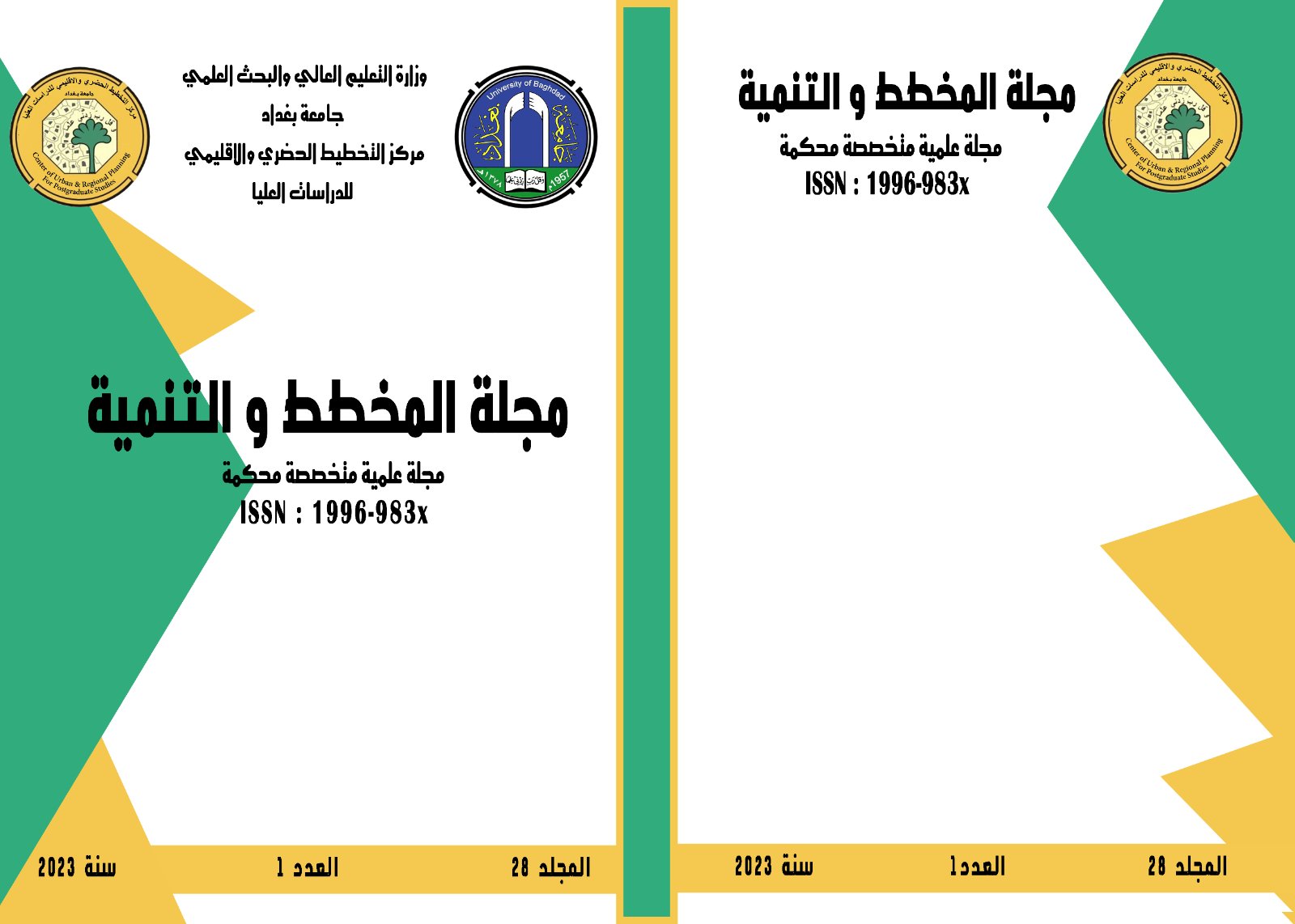The impact of population density in sustainable housing - An applied study in the city of Baghdad (Mahalla 817), Al-Bayaa as a model
Abstract
Population density represents an important indicator for determining the growth of the size of urban areas. Population density has a direct impact on the quality of life, and its excessive rise may lead to the deterioration of basic service facilities. The problem of the research is that the increase in the total population densities of the residential neighborhood may reflect negatively on the nature of the services provided to the residents in these shops, and thus the failure to achieve sustainability in the residential locality. The research assumes that the increase in population densities negatively affects the achievement of sustainability in the residential neighborhood.
And within the theoretical framework of the research, the concepts of population and housing densities and their levels, concepts related to housing, dwelling, and the residential environment, and the link between these concepts were reviewed, while addressing the concept of sustainability in the urban environment, and the concepts of the residential neighborhood, with mentioning of the social, urban-planning and environmental indicators to achieve sustainability in the residential neighborhoods. Where, a set of indicators (social, urban planning, and environmental) were reached that represent the requirements for the sustainability of the residential neighborhood.
As for the practical framework of the research, it was carried out within a field study of the Al-Bayaa neighborhood (817), to identify the social and urban characteristics of the area, and to identify the change in its population densities and the reasons behind the increase in its population by questioning the residents’ opinions about the requirements for the sustainability of the residential neighborhood, and then conducting a statistical and planning analysis of the results of the residents’ questionnaire using statistical methods to ensure that there are real or marginal differences for the researched periods (the time of construction, the present time, the present time of the old residents), and
the results of the statistical and planning analysis were summarized for all the requirements that were presented through the final evaluation of all the requirements that decreased its level compared to what it was at the time of construction, which has regressed from the situation it was in previously, and whose level has risen from the previous one.
To achieve the goal of the research, the researcher relied on proving his hypothesis on the descriptive analytical approach in achieving the goal of the research and reaching the final result, which depends on understanding the problem of the study, and finding appropriate solutions to it, by studying the changes in population densities of the neighborhood during two different periods within the study area (District 817 in Al-Bayaa), and to obtain data and information about the study area, the researcher used the questionnaire to collect information about the study area.
The most important results reached in this research are the low requirements for achieving the sustainability of the neighborhood (social, urban - planning, environmental) as a result of the effects of the increase in population density in the study area affecting negatively these requirements such as (community and neighborhood, population density, existence of open and green spaces), with a number of indicators that have declined significantly from what they were previously such as (social interaction, the formation of the social convergence opportunities, the efficiency of roads, recreational areas) and a number of indicators that were positively affected by this increase such as (the availability of gathering spaces within the urban formation for the residential neighborhood, and water availability).
Finally, the most important recommendations of the study were the need to support the indicators of the sustainability of the residential community by increasing social interaction in the residential community and enhancing the individuals' sense of security, safety, social solidarity, community unity and neighborhood by maintaining levels of homogeneity in the formation of urban spaces and providing privacy for housing units in the built environment and not allowing encroachment on Building controls, while strengthening the social relations between the residents of the residential locality and opportunities for social convergence through the optimal use of land uses and encouraging recreational activities, while preserving the residential environment of the residential locality by limiting modifications to housing units to reduce the opportunities for newcomers and limit the change in the pattern of residential land uses To commercial or direct its activities through legislation that limit it.



